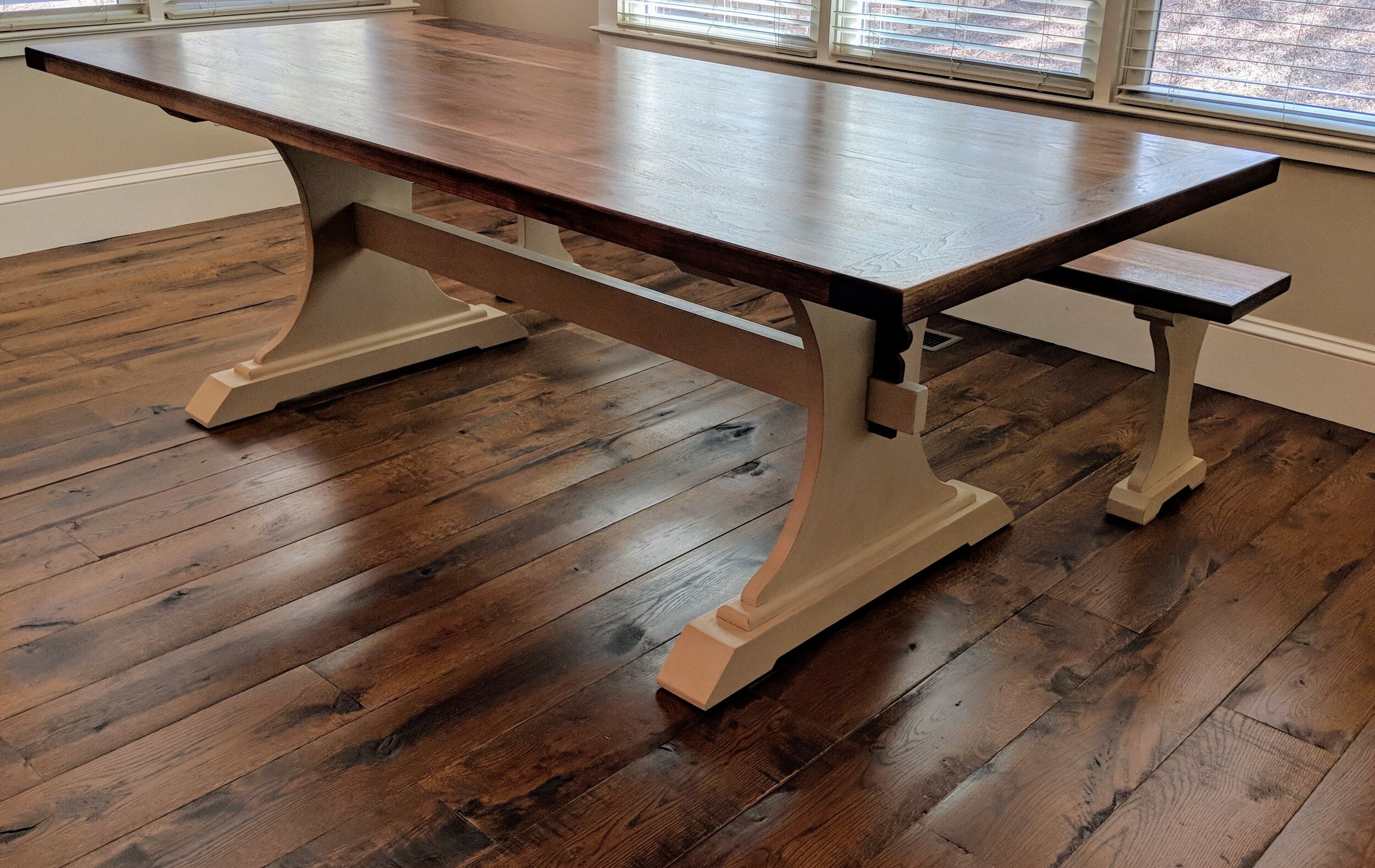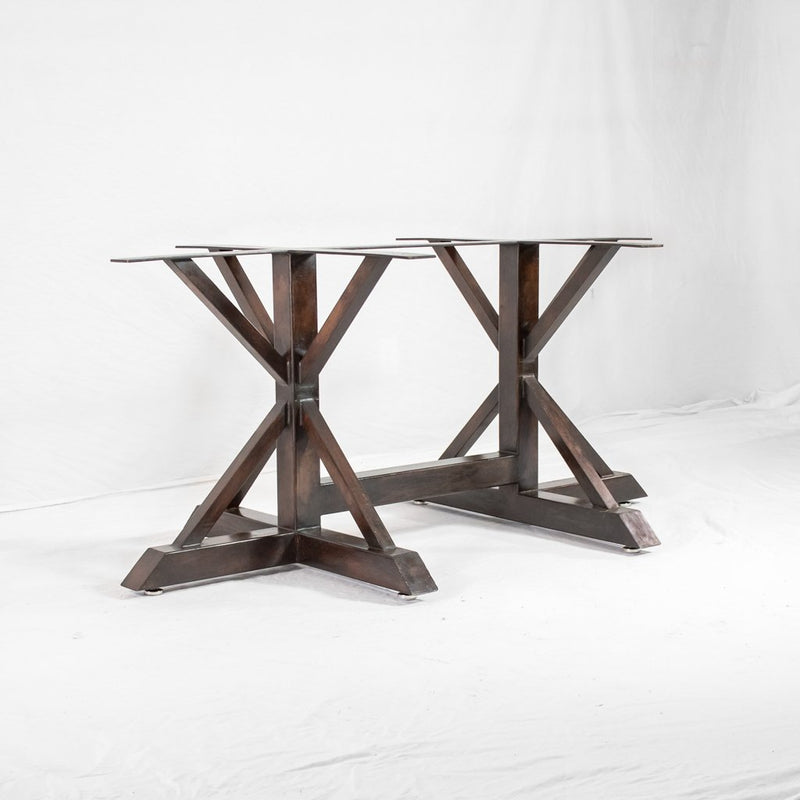Simple Steps to Replacing Old Dining Room Table Legs with New Ones
Simple Steps to Replacing Old Dining Room Table Legs with New Ones
Blog Article
How to Select the Perfect Eating Space Table Legs for Your Home Decoration
Choosing the optimal dining room table legs is a nuanced process that requires careful factor to consider of various aspects, including your area restraints, aesthetic preferences, and practical requirements. The interplay between dimensions, materials, and designs can substantially affect the setting of your eating area, making it vital to approach this choice carefully.
Assess Your Dining Area
Analyzing your eating area is important for choosing the right table legs that enhance both looks and performance. Begin by gauging the dimensions of your eating location, including ceiling elevation, floor area, and distance to other furnishings. This info will certainly aid identify the ideal dimension and height of your table, which directly affects the selection of table legs.
Next, consider the style and layout of your eating area. An open-concept style might benefit from table legs that provide visual agility, such as slim metal or acrylic choices. Conversely, an extra standard setup may call for strong wooden legs that offer a sense of durability.
Assess the existing color palette and products in your eating area. Balancing the table legs with these elements produces a natural look that enhances the total decoration. In addition, think about the performance required in your area. If you often host large events, consider legs that provide extra assistance and stability.
Ultimately, a thorough analysis of your dining room will certainly direct you in making an informed decision, making sure that your table legs not only boost the visual allure yet also offer functional purposes.
Consider Your Style Preferences
When picking dining-room table legs, it is necessary to review your individual style choices, as they significantly affect the general visual of your dining space. Your choice of table legs can either enhance or contrast with existing decor, making it critical to straighten them with your recommended interior decoration motif.
If your home leans in the direction of a modern-day aesthetic, consider smooth metal or minimalist wood legs that provide a clean, uncluttered appearance. For a much more standard approach, elaborate wooden legs with complex carvings can add a touch of beauty and elegance. Industrial styles take advantage of robust, raw products such as recovered wood and steel mixes, reflecting a sturdy appeal.
In addition, farmhouse and rustic designs typically prefer tough, beefy legs that stimulate a sense of heat and comfort. Alternatively, if your décor is diverse, you might pick unusual forms or a mix of materials to develop aesthetic interest.

Evaluate Product Options
The choice of product for eating room table legs plays an essential function in both longevity and visual charm. Usual materials consist of timber, steel, and composite choices, each offering distinct qualities that can affect the total look and durability of your table.
Timber is a traditional option, known for its heat and adaptability. Hardwoods like oak and walnut offer outstanding toughness and can be completed in various discolorations to match any style. However, softwoods like yearn are more prone to scrapes and damages, making them less perfect for high-traffic locations.
Steel legs, usually crafted from steel or aluminum, emanate modernity and industrial appeal. They are resistant and extremely sturdy to put on, making them ideal for families with youngsters or regular celebrations (dining room table legs). Additionally, metal can be finished in various shades, boosting the modification opportunities
Composite materials, such as MDF or laminate, offer affordability and diverse styles. While usually less sturdy than solid timber or metal, they can still supply a fashionable look and are commonly very easy to keep.
Inevitably, the material you pick need to straighten with your lifestyle, aesthetic choices, and the level of use your table browse around this web-site will certainly experience.
Determine Height and Dimension
Picking the suitable elevation and dimension for your dining-room table is vital for both capability and comfort. The basic elevation for eating tables normally varies from 28 to 30 inches, enabling enough legroom for a lot of people when seated. Nonetheless, it is crucial to consider the measurements of your dining space and the sorts of chairs you intend to make use of.

Moreover, take into consideration the proportions of your eating room. A larger table in a roomy area can develop a grand ambiance, while a smaller sized table works well in more intimate setups. Ultimately, the right elevation and size will certainly harmonize with your overall design and improve the eating experience for you and your guests.
Explore Modification Opportunities

Furthermore, the design of the legs can be customized to fit numerous designs, such as rustic, modern, or industrial. Conical legs can stimulate a mid-century contemporary feel, while beefy, block-style legs might resonate with typical or farmhouse decor.
House owners can also check out shade surfaces, from all-natural wood discolorations to repaint, enabling them to match or comparison with the table top and bordering design.
In addition, leg height can be adapted to fit particular seating plans or personal preferences, enhancing both comfort and capability.
Last but not least, distinct decorations, such as carvings or decorative brackets, can even more customize the table legs, making the eating experience not just a dish however a declaration item in the home. By taking into consideration these personalization choices, homeowners can create a dining-room table that truly reflects their uniqueness.
Final Thought
Selecting the excellent Learn More Here eating space table legs needs cautious consideration of various variables, including the measurements of the eating space, style choices, product durability, and wanted elevation. Modification choices better enhance the capacity to achieve a natural aesthetic that matches the general decoration. By methodically assessing these elements, homeowners can make sure that the selected table legs not just accomplish functional requirements yet likewise our website contribute positively to the dining experience and ambiance of the home.
Selecting the suitable dining area table legs is a nuanced process that calls for cautious factor to consider of different components, including your space restrictions, visual choices, and practical demands.Examining your dining room is essential for picking the right table legs that match both looks and capability.When figuring out size, determine the location where the table will certainly be placed to guarantee it fits pleasantly, allowing for at least 36 inches of clearance around the table for easy movement. A larger table in a sizable location can create a grand setting, while a smaller table functions well in even more intimate settings.Choosing the excellent eating space table legs needs mindful consideration of various aspects, consisting of the dimensions of the dining room, style choices, product toughness, and preferred elevation.
Report this page